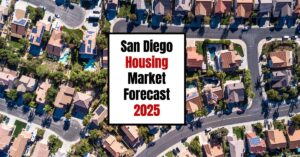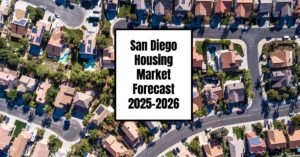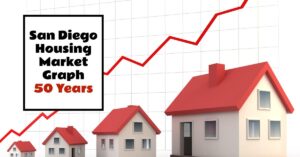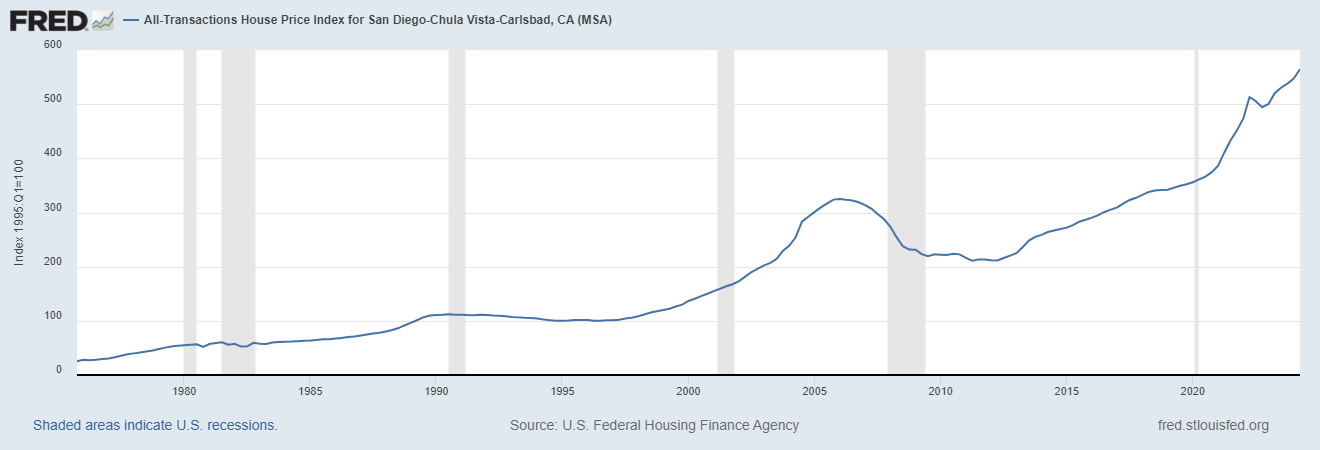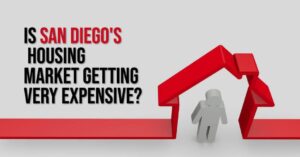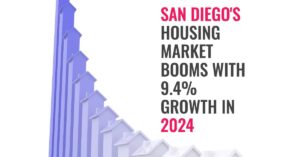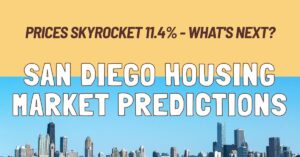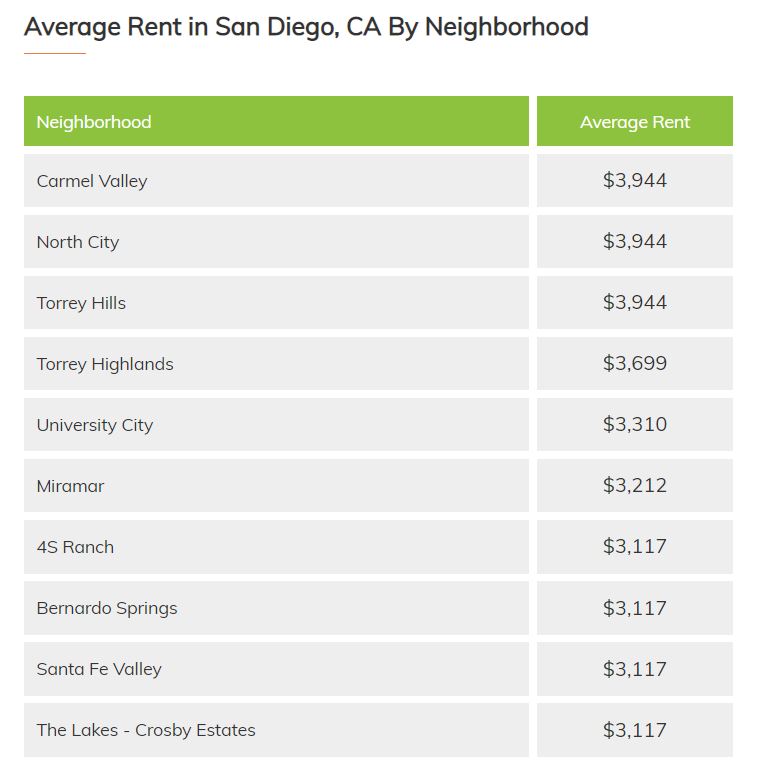Thinking about buying or selling a home in San Diego? If you're trying to figure out what's going on with our local housing market, you're not alone! It feels like a big question mark sometimes, with prices, interest rates, and how many homes are available all playing a part. Let's cut to the chase: The San Diego housing market is currently experiencing a slowdown in sales compared to last year, with median home prices showing a slight dip, but it's still a competitive environment for buyers.
We're not in a crazy boom or a sudden crash, but more of a balancing act. It's a time where being informed and patient can make a big difference.
Current San Diego Housing Market Trends: What's Happening Now?
Home Sales: A Bit of a Slowdown
Across California, home sales have been trailing behind last year's numbers for a few months now. This includes San Diego. In July, existing single-family home sales in California were down 4.1% compared to the same time last year. While this data is for the whole state, it's a good indicator of what's happening in many areas, including our own. In San Diego, sales declined by 6.5% compared to 2024.
Think of it like this: last year, more people were jumping into the market. This year, some buyers are taking a step back. This doesn't mean no one is buying or selling, just that the pace has cooled a bit.
Home Prices: Small Shifts, Not Big Drops
Now, about those prices. The median home price statewide dipped slightly in July, by about 0.3% compared to last year. For San Diego specifically, the California Association of REALTORS® (C.A.R.) reported that the median sold price of an existing single-family home was $1,040,000 in July 2025. This is up 2.0% from July 2024.
So, while prices aren't skyrocketing like they might have been a couple of years ago, they haven't exactly tanked either. It’s more of a gentle adjustment.
Are Home Prices Dropping?
It's more accurate to say they've moderated rather than dropped significantly. While the statewide median price saw a slight year-over-year decrease, San Diego saw a small year-over-year dip. However, month-over-month, prices in San Diego actually saw a slight increase from June to July. This tells me that while there's not the same intense bidding wars driving prices up at every turn, homes are still holding their value and even appreciating slightly in some cases.
Housing Supply: More Homes on the Market
One of the biggest shifts we're seeing is in the housing supply. In July, the total number of active listings in California was up a significant 37.7% from the previous year. This is the highest it's been in 69 months!
What does this mean for San Diego? It means there are more homes available for buyers to choose from. When there are more options, buyers generally have more negotiating power. The “unsold inventory index,” which tells us how long it would take to sell all the homes on the market at the current pace, was 3.5 months for San Diego in July. This is up from 2.6 months in July 2024, meaning it's taking a little longer to sell homes.
Is San Diego a Buyer's or Seller's Housing Market?
This is the million-dollar question, right? Based on the trends, it feels like we're moving towards a more balanced market, with leaning slightly towards a buyer's advantage in some areas.
- For Buyers: With more inventory and slightly longer selling times, buyers have a bit more breathing room. They can take their time to find the right home and may have a better chance of negotiating terms.
- For Sellers: While it's not as frenzied as it once was, well-maintained homes in desirable areas are still attracting attention and selling. However, sellers might need to be more realistic about pricing and be prepared for some negotiation.
The sales-price-to-list-price ratio, which tells us if homes are selling above or below asking price, was at 98.5% statewide in July. This means, on average, homes sold for slightly less than their asking price. For San Diego, this suggests buyers have a decent shot at getting a deal.
Market Trends: What to Watch
Here's a quick rundown of the key trends shaping the San Diego housing market:
- Slower Sales: Fewer homes are changing hands compared to last year.
- Price Stability (with slight dips): Prices aren't skyrocketing, and in some cases, have seen minor year-over-year decreases, but they're not crashing.
- Increased Inventory: More homes are available, giving buyers more choices.
- Longer Time on Market: Homes are taking a little longer to sell.
- Negotiating Power: Buyers are gaining a bit more leverage.
Impact of High Mortgage Rates
We can't talk about the housing market without mentioning mortgage rates. As of August 21, 2025, the average 30-year fixed mortgage rate is around 6.58%, and the 15-year is about 5.69%. While rates have come down from their peaks, they're still higher than what many buyers experienced a few years ago.
Here's how rates affect things:
- Affordability: Higher rates mean higher monthly payments, which can impact how much house a buyer can afford. This is a big reason why some buyers are waiting on the sidelines.
- Demand: When borrowing costs are higher, demand can soften. This is a major factor in the slower sales we're seeing.
- Future Outlook: Experts predict that 30-year fixed rates might settle between 6.0% and 6.5% by the end of 2025. This could bring more buyers back into the market if they feel comfortable with those numbers.
San Diego County Breakdown
Let's look specifically at San Diego County using the provided data:
| Metric | July 2025 | July 2024 | Year-over-Year Change |
|---|---|---|---|
| Median Sold Price (SFH) | $1,040,000 | $1,020,000 | +2.0% |
| Sales (SFH) | N/A | N/A | -6.5% |
| Median Time on Market | 24 days | 16 days | +8 days |
| Unsold Inventory Index (UII) | 3.5 months | 2.6 months | +0.9 months |
As you can see, San Diego has experienced a slight increase in median home prices year-over-year, but a notable decrease in sales volume and a significant increase in the time it takes to sell a home. This reinforces the idea of a cooling market where buyers have more time and options.
My Take on the San Diego Housing Market
From my experience, what we're seeing is a natural market correction after a period of rapid growth. The days of homes flying off the market within hours with dozens of offers are less common right now. Instead, it’s more about careful consideration from buyers and strategic pricing from sellers.
For anyone looking to buy, this could be a good time to get into the San Diego market if you were priced out before. You might have more room to negotiate and aren't facing the same level of intense competition. Just be sure you're comfortable with current mortgage rates and the long-term financial commitment.
If you're thinking of selling, don't panic! Your home still has value. The key is to price it correctly from the start, make sure it shows its best, and be prepared for a slightly longer selling period. Working with a knowledgeable local agent who understands these nuances is more important than ever.
Ultimately, the San Diego housing market is still a strong one, but it's adjusting to new economic realities. Staying informed and working with trusted professionals will help you navigate these current trends successfully.
San Diego Housing Market Forecast 2025: What's Next for Home Prices?
Now, let's dive right in: what's the San Diego housing market forecast looking like? Based on the latest data, it seems we might see a slight dip in home values in the coming months. Experts predict a slight dip in home values in the near future, but a “crash” is unlikely.
The San Diego-Carlsbad average home value is currently $941,517, showing a 1.6% decrease over the past year, with homes going pending in roughly 19 days. Let's dive deeper into what's influencing this forecast and what it could mean for you.
What the Experts are Saying:
Zillow's latest forecasts provide some insights into the coming months:
| Timeframe | Predicted Change in Home Values |
|---|---|
| July 2025 | -0.7% |
| September 2025 | -2.1% |
| June 2025 – June 2026 | -1.5% |
This suggests a gradual cooling off of the San Diego housing market over the next year, but not a drastic decline.
How Does San Diego Compare?
Let's see how San Diego's housing market forecast stacks up against other major California metros:
| Region | Predicted Change by July 2025 | Predicted Change by September 2025 | Predicted Change June '25 – June '26 |
|---|---|---|---|
| Los Angeles, CA | -0.4% | -0.9% | -1.3% |
| San Francisco, CA | -1% | -3.2% | -6.1% |
| Riverside, CA | -0.5% | -1.3% | -0.9% |
| Sacramento, CA | -0.7% | -2.1% | -3.7% |
| San Jose, CA | -1% | -2.6% | -4% |
| Fresno, CA | -0.3% | -1% | -1.2% |
| Bakersfield, CA | -0.3% | -0.8% | -0.1% |
| San Diego, CA | -0.7% | -2.1% | -1.5% |
As you can see, San Diego's projected decline is similar to other major California cities, suggesting a statewide trend towards slightly lower home values. San Francisco is seeing a more significant projected decline.
Nationwide Trends: What's Happening Across the US?
Lawrence Yun, the Chief Economist for the National Association of Realtors (NAR), is quite optimistic for the future:
- Existing Home Sales: He expects a 6% rise in 2025 and a whopping 11% jump in 2026. That would be a great recovery!
- New Home Sales: Projected to increase by 10% in 2025 and 5% more in 2026. This will help with the low housing supply.
- Median Home Prices: Forecasted to rise by 3% in 2025 and 4% in 2026.
- Mortgage Rates: Expected to average 6.4% in the second half of 2025 and potentially drop to 6.1% in 2026. He calls low mortgage rates the “magic bullet” to increasing market activity.
So, Will Home Prices Crash in San Diego?
Based on the data and expert opinions, a housing market crash in San Diego seems unlikely. While Zillow predicts some moderate price softening in the short term, the overall market seems to be stabilizing. Demand remains relatively high, and experts are predicting positive growth over the long-term. Mortgage rates may come down in the future, which historically has pushed home prices up and made it easier for people to buy houses.
My Take:
I believe the San Diego housing market will likely experience a gentle correction rather than a crash. The area remains highly desirable. If mortgage rates drop as predicted, we could see a resurgence in buyer activity. If you're looking at buying, now might be a good time to get in while prices are slightly down. And for sellers, understanding these trends can help you price your home competitively.
Looking Ahead to 2026
Following the trends outlined by NAR, a reasonable forecast for the San Diego housing market in 2026 would be a period of moderate growth. We could see an increase in home sales and a continued, although slower, rise in median home prices assuming mortgage rates hold steady or decline as predicted. I expect housing inventory to start playing catch up with demand.
San Diego-Carlsbad Housing Forecast
Reflects current market demand as of June 2025.
Homes are selling in around 19 days on average.
Active listings available as of June 2025.
New listings added in June 2025.
Sales price data as of May 2025.
Expected growth from June 2025 to June 2026.
“San Diego housing market will likely experience a correction in home prices rather than a crash.”
Why is Housing So Expensive in San Diego?
San Diego's allure is undeniable. Pristine beaches, perfect weather, and a vibrant city life make it a dream destination for many. But this paradise comes at a price, particularly when it comes to real estate. Let's delve into the factors driving San Diego's expensive housing market:
Limited Supply, High Demand
- Geography: Nestled between the Pacific Ocean and mountains, San Diego has limited developable land. This scarcity creates a competitive seller's market, pushing prices upwards.
- Desirable Location: San Diego's climate, job opportunities, and outdoor activities attract residents and retirees alike, placing constant pressure on a finite housing stock.
Economic Factors
- Strong Local Economy: San Diego boasts a diverse and thriving economy, fueled by a strong tourism industry, a growing tech sector, and a robust military presence. The economy grew in 2021, adding over $11 billion to its gross regional product (GRP) compared to pre-pandemic levels. In 2022, the San Diego metro area's real gross domestic product (GDP) was $257.34 billion, a significant increase from the previous year's $250.06 billion. According to the UCLA Anderson March Economic Outlook, San Diego County is expected to grow 2.7% in 2023. This economic strength translates to job growth and attracts professionals with higher salaries who can afford premium housing.
- Low Interest Rates (Historically): Over the past decade, interest rates have hovered near historic lows. This has significantly reduced the monthly mortgage payment for a fixed-rate loan, making homeownership more affordable for many buyers. For example, in 2016, the average 30-year fixed mortgage rate was around 3.5%. By 2 2021, that number had dipped below 3%, making it significantly cheaper to finance a home purchase. This easy access to cheap credit fueled a surge in buyer demand, which in turn drove up housing prices. While interest rates have risen in 2024, they remain historically affordable compared to long-term averages. However, even with slightly higher rates, the overall impact on affordability is mitigated by wage growth and a strong local economy.
Regulations and Taxes
- Development Restrictions: San Diego, like many coastal cities in California, faces challenges in balancing growth with environmental protection. Strict zoning regulations, lengthy permitting processes, and environmental impact reviews can significantly slow down or even halt new housing developments. This can stifle the ability to increase housing supply to meet the growing demand, putting upward pressure on prices. Additionally, citizen groups and environmental concerns can further complicate the development process. While these regulations are important for safeguarding the natural beauty and character of San Diego, they can also contribute to the limited housing inventory and high costs.
- Property Taxes: California has relatively high property taxes, with an average effective rate of 0.73% in 2023 according to the California Tax Foundation. This means that for a home valued at $1 million, the annual property tax bill would be around $7,300. High property taxes can impact affordability, particularly for first-time homebuyers or those on fixed incomes. However, these taxes also contribute to the overall perceived value of San Diego real estate. Property taxes are a major source of revenue for local governments, which use these funds to finance essential services like schools, roads, and public safety. Additionally, high property taxes can discourage speculation and absentee ownership, potentially leading to a more stable housing market.
National Trends
Nationwide Housing Market: While San Diego stands out, it's part of a larger national trend of rising housing costs. Investor activity and a national shortage of affordable housing contribute to the overall market dynamic.
The “Sunshine Tax”
San Diegans often jokingly refer to the high cost of living as the “sunshine tax.” While it might be a sardonic term, it reflects the reality that many people are willing to pay a premium to live in such a desirable location with a high quality of life.
How is the Rental Housing Market Doing in San Diego?
The San Diego real estate market has been ranked among the ten most expensive real estate markets in the country, though it ranks below several other West Coast cities. This creates massive demand for San Diego rental properties by those who simply cannot afford to buy homes.
The rental market will continue to grow as the city grows an estimated 500,000 population by 2050, adding tens of thousands each year. The median rent in San Diego is $2700. The rent you’d receive on single-family San Diego rental properties would, of course, be much higher.
Renters vs. Owners in San Diego
San Diego's property rental market is influenced by several factors, including the local economy, job opportunities, and the overall demand for housing. It's a city known for its mix of urban and suburban neighborhoods, each with its own rental and ownership dynamics.
San Diego had a diverse housing landscape with a mix of renters and property owners.
- Renters: San Diego has a significant population of renters, comprising individuals and families who lease residential properties. This includes apartments, condominiums, townhouses, and single-family homes. The exact percentage of renters relative to property owners can vary by neighborhood and demographic factors.
- Owners: San Diego also has a substantial number of property owners. These are individuals or entities who own residential properties and may either live in their properties or lease them out to renters. Property owners contribute to the diversity of the city's housing options.
Size of the Rental Market
The size of the San Diego property rental market is substantial, with a wide range of rental properties available to residents. This market includes apartments, houses, and various types of housing units. The exact size of the rental market can fluctuate based on factors like population growth, economic conditions, and housing development trends.
Real estate agencies, rental platforms, and government agencies often track and report on the status of the rental market, offering detailed insights into its size and dynamics.
For the most up-to-date and specific information regarding the current state of the San Diego property rental market, including the number of renters and property owners, it's recommended to refer to the latest reports and data from sources like local real estate associations, government housing agencies, and real estate websites.
San Diego's property rental market is an essential component of the city's real estate landscape, offering a wide range of housing options to its diverse population.
San Diego Apartment Rent Prices
As of July 2025, the median rent for all bedroom counts and property types in San Diego, CA is $2,800. This is +44% higher than the national average.
The monthly rent for an apartment in San Diego, CA is $2,499. A 1-bedroom apartment in San Diego, CA costs about $2,295 on average, while a 2-bedroom apartment is $2,928. Houses for rent in San Diego, CA are more expensive, with an average monthly cost of $4,150.
Rent prices for all bedroom counts and property types in San Diego, CA have remained the same in the last month and have decreased by 5% in the last year.
Housing Units and Occupancy
In terms of occupied housing units, San Diego has the following distribution:
- Renter-occupied Households: Renter-occupied households make up 53% of the housing units in San Diego, indicating a significant presence of renters in the city.
- Owner-occupied Households: Owner-occupied households account for 47% of the housing units, highlighting a balanced mix of homeowners in the area.
These insights provide a snapshot of the current rental market in San Diego. Rental prices have seen some fluctuations in recent months, with variations in different apartment types. The city offers a range of neighborhoods to suit different budgets and preferences, with a balanced mix of renters and homeowners.
Recommended Read:
- Is San Diego’s Housing Getting Very Expensive: Experts Predict
- San Diego Housing Market Booms With 9.4% Growth: Expert Predictions
- San Diego Housing Market Predictions: Soaring and Expensive!
- San Diego Housing Market Predictions: Prices Skyrocket 11.4%; What's Next?
- Is San Diego Real Estate a Good Investment?
